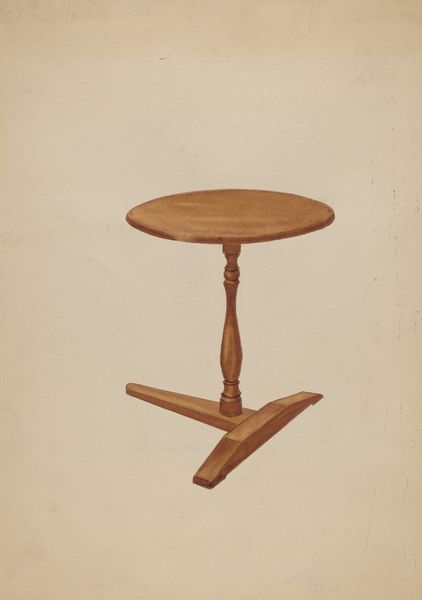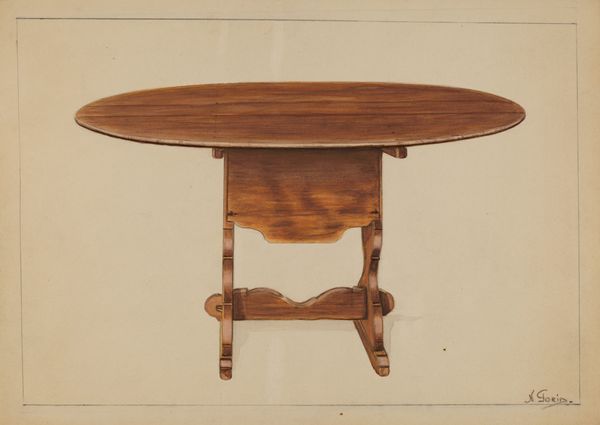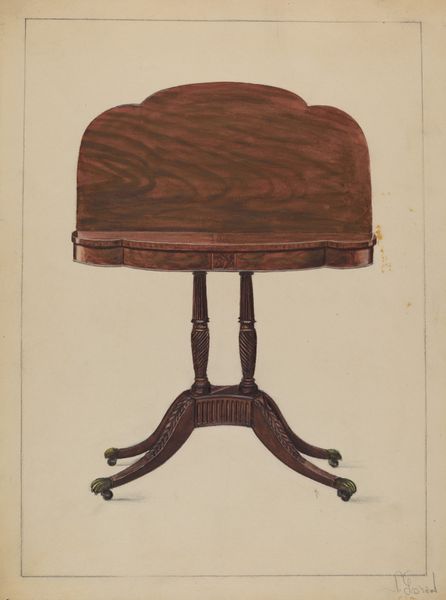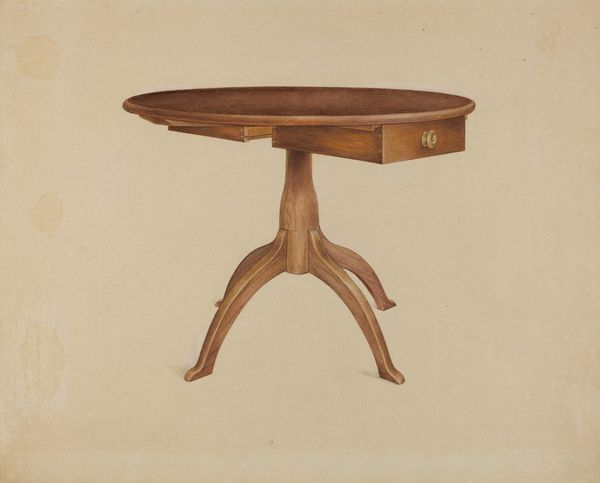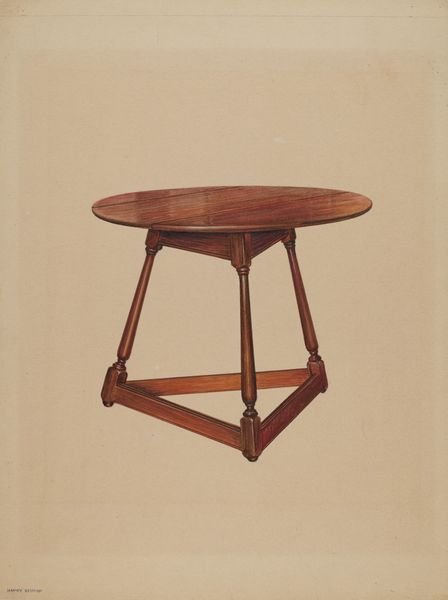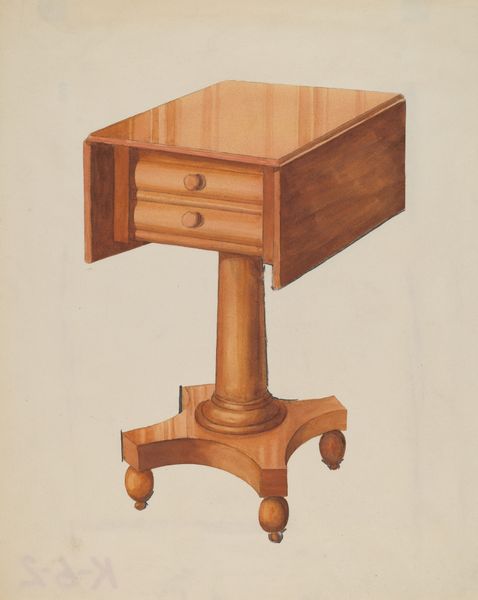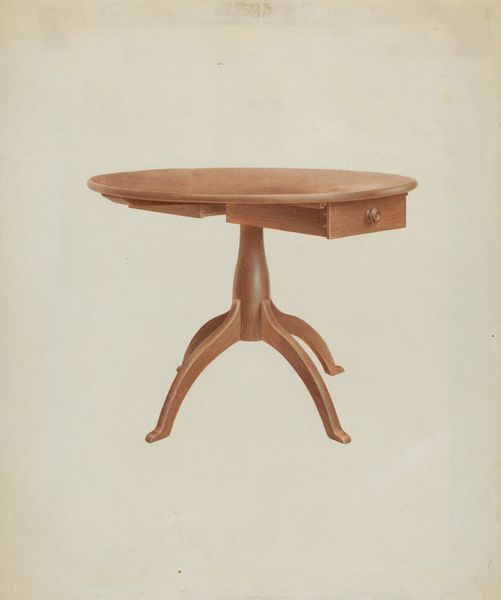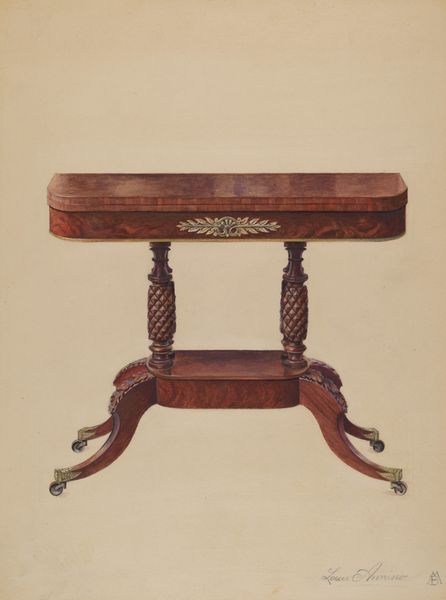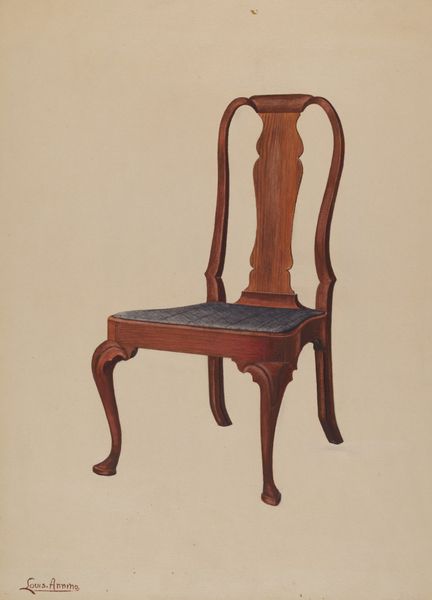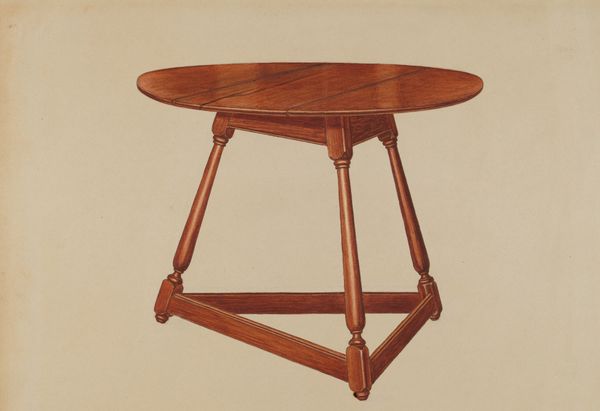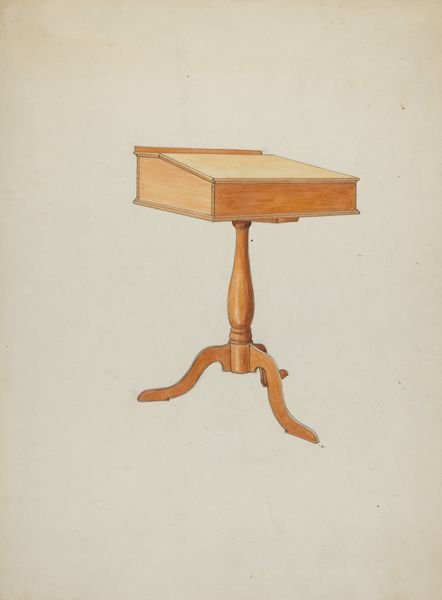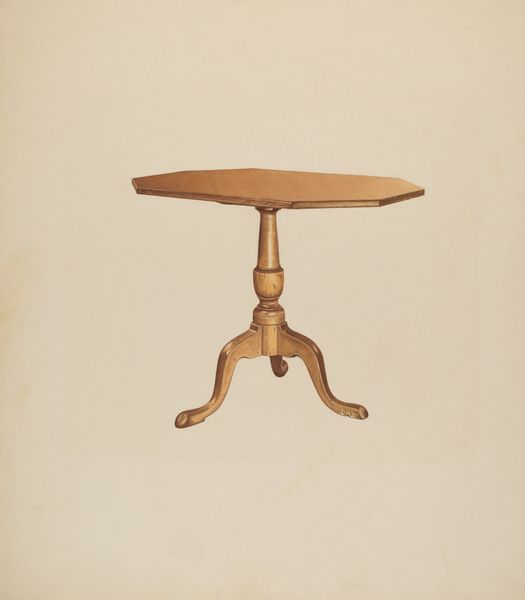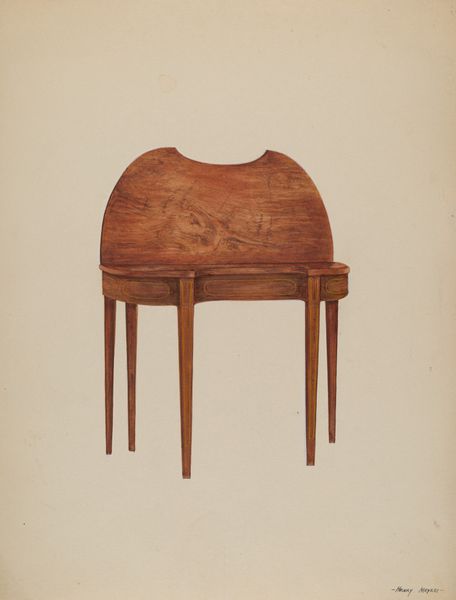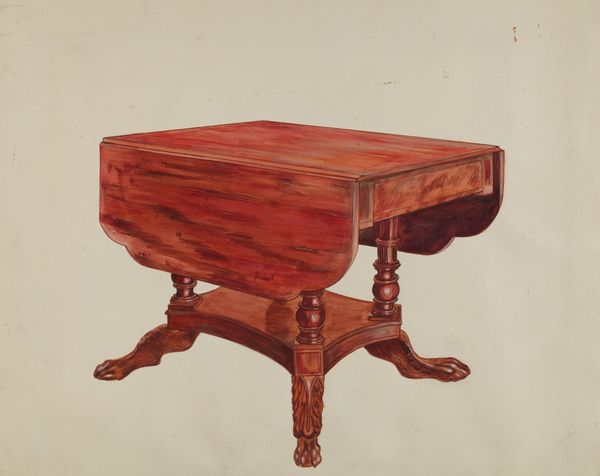
drawing, coloured-pencil, watercolor
#
drawing
#
coloured-pencil
#
water colours
#
watercolor
#
coloured pencil
#
academic-art
Dimensions: overall: 38.4 x 27.5 cm (15 1/8 x 10 13/16 in.) Original IAD Object: Top: 36x35 1/2". Pedestal 28"
Copyright: National Gallery of Art: CC0 1.0
Editor: This lovely drawing is called “Card Table” and was created by Virginia Kennady in 1939, using watercolors and colored pencils. I find the presentation so formal and precise, like a catalog image, but it also has a somewhat sterile feel. How do you read this work? Curator: The sterility you observe is fascinating. Think about what kind of societal roles drawings like this often filled. It's not just an objective depiction of furniture; consider this drawing as a tool—perhaps for commerce or a record for historical documentation. Who do you think would be seeing it and why? Editor: Maybe designers showcasing options to clients or for documenting styles of the time? Does this have something to do with the Arts and Crafts movement, in opposition to industrialization? Curator: Precisely! It could be connected to documenting styles in the face of rapidly changing tastes. Also consider the power dynamics. Who typically commissioned and owned furniture like this in 1939, and what does that tell us about access to beauty and leisure? The way it's drawn elevates a mundane object, reminding us of craftsmanship as a statement of social standing and aspirational design. Editor: That adds a layer of complexity that I hadn't considered before. It's not just a table; it's a statement about taste and class! Curator: Absolutely. And the choice to render it with such care using watercolor and colored pencil reinforces its perceived value. It is deliberately distanced from the everyday. A photo would not achieve the same artistic 'value.' Editor: So, appreciating this card table requires looking beyond just its surface appeal. You've opened my eyes to the broader social and economic factors shaping its existence and the art-making of its era. Curator: Exactly! And thinking this way invites a more critical assessment of any work of art.
Comments
No comments
Be the first to comment and join the conversation on the ultimate creative platform.
